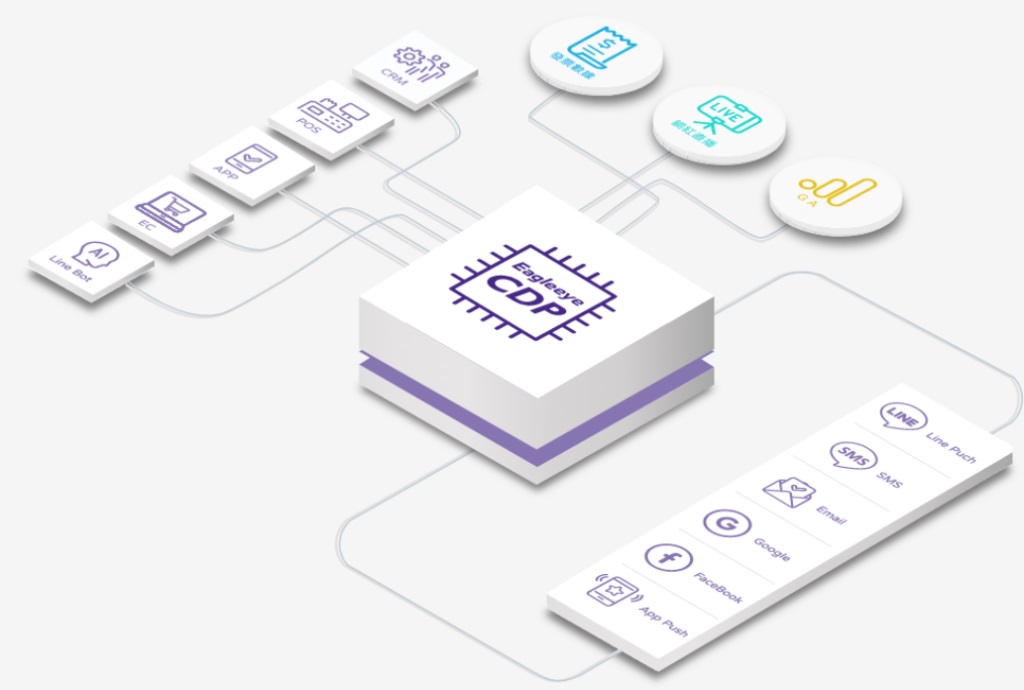
What Is a Customer Data Platform (CDP)? Taiwan Enterprise Implementation Guide 2025
CDP
10 October 2025
- What Is a CDP: Definition and Differences from CRM/DMP
- Why Taiwanese Enterprises Need a CDP in 2025
- Five Core Capabilities of a CDP: Integration, Identity Stitching, Segmentation, Real-Time Activation, Governance
- Taiwan Implementation Scenarios: E-commerce/Retail, Finance, and O2O
- Key Selection Criteria and Implementation Roadmap
- Conclusion & Further Reading
- What Is a CDP: Definition and Differences from CRM/DMP
- Why Taiwanese Enterprises Need a CDP in 2025
- Five Core Capabilities of a CDP: Integration, Identity Stitching, Segmentation, Real-Time Activation, Governance
- Taiwan Implementation Scenarios: E-commerce/Retail, Finance, and O2O
- Key Selection Criteria and Implementation Roadmap
- Conclusion & Further Reading
1. What Is a CDP: Definition and Differences from CRM/DMP
Definition
A Customer Data Platform (CDP) is a system that continuously and audibly unifies fragmented data from websites, apps, POS, EDM, customer service, and ad platforms into a single customer profile. This profile can then be activated in real time by marketing, product, and service teams.
CDP vs. CRM
CRM focuses on sales, service processes, and contact records, while CDP focuses on cross-channel behavioral data and real-time audience activation.
CDP vs. DMP
DMPs rely on anonymous third-party cookies and audience buying; CDPs are built around first-party data, supporting consent management and long-term relationship building.
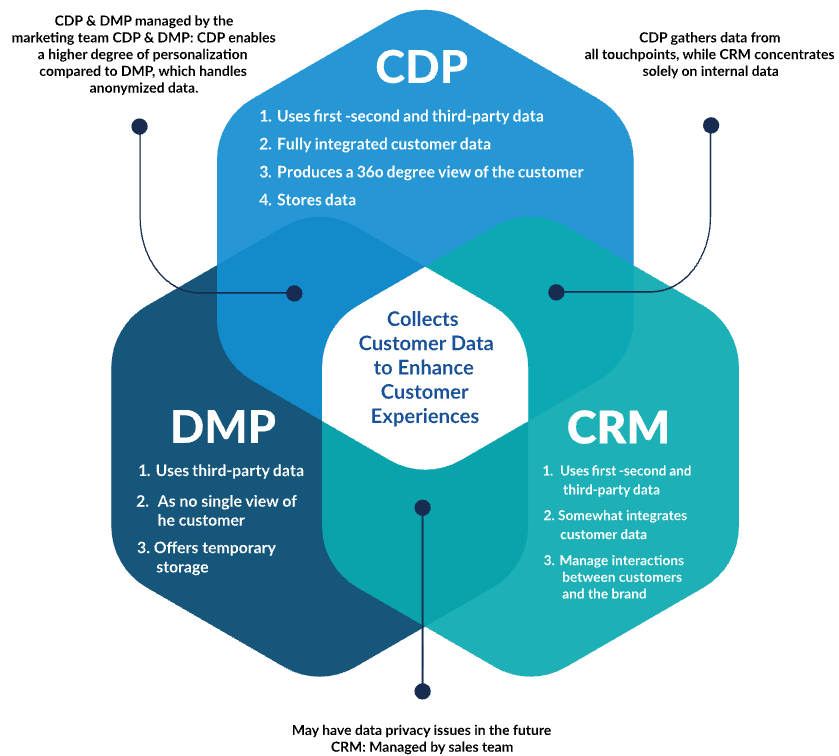
2. Why Taiwanese Enterprises Need a CDP in 2025
Cookieless & Privacy Trends
With third-party cookies phasing out and consent requirements tightening, brands must build their own first-party audience assets.
Single Customer View (SCV)
Unify data from web, app, CRM, and POS systems to create a complete SCV and deliver consistent cross-channel experiences.
Real-Time Personalization
Trigger actions (e.g., “Added to cart but not purchased after 30 minutes”) within seconds to boost conversions and repurchases.
Efficiency & ROI
Build audiences once and activate across multiple channels (push, SMS, EDM, ads, website). Automate retargeting and frequency control to reduce CAC and improve ROAS.
Compliance & Governance
Centralized consent management, access control, audit trails, and localization to reduce compliance risk.
Closed-Loop Measurement
Sync data bi-directionally with DWH/BI to support advanced models like CLV and churn prediction.
Cookieless & Privacy Trends
With third-party cookies phasing out and consent requirements tightening, brands must build their own first-party audience assets.
Single Customer View (SCV)
Unify data from web, app, CRM, and POS systems to create a complete SCV and deliver consistent cross-channel experiences.
Real-Time Personalization
Trigger actions (e.g., “Added to cart but not purchased after 30 minutes”) within seconds to boost conversions and repurchases.
Efficiency & ROI
Build audiences once and activate across multiple channels (push, SMS, EDM, ads, website). Automate retargeting and frequency control to reduce CAC and improve ROAS.
Compliance & Governance
Centralized consent management, access control, audit trails, and localization to reduce compliance risk.
Closed-Loop Measurement
Sync data bi-directionally with DWH/BI to support advanced models like CLV and churn prediction.
3. Five Core Capabilities of a CDP
Data Integration
Connects websites, apps, POS, CRM, data warehouses (BigQuery/Snowflake), EDM, and ad platforms through native connectors or APIs—maintaining data freshness.
Identity Stitching
Merges identifiers (email, phone, device ID, member ID) across devices and channels using rules or machine learning to form real-time customer profiles.
Audience Segmentation
Builds dynamic audiences based on attributes, behavior, transactions, and consent status; supports both historical lookback and real-time updates.
Real-Time Activation
Syncs audience segments to push, SMS, EDM, ads, on-site personalization, or customer service tools. Supports event-driven journeys (e.g., “cart abandonment after 30 minutes”).
Data Governance & Compliance
Manages consent, data retention, access control, and audit trails while ensuring data sovereignty and localization compliance.
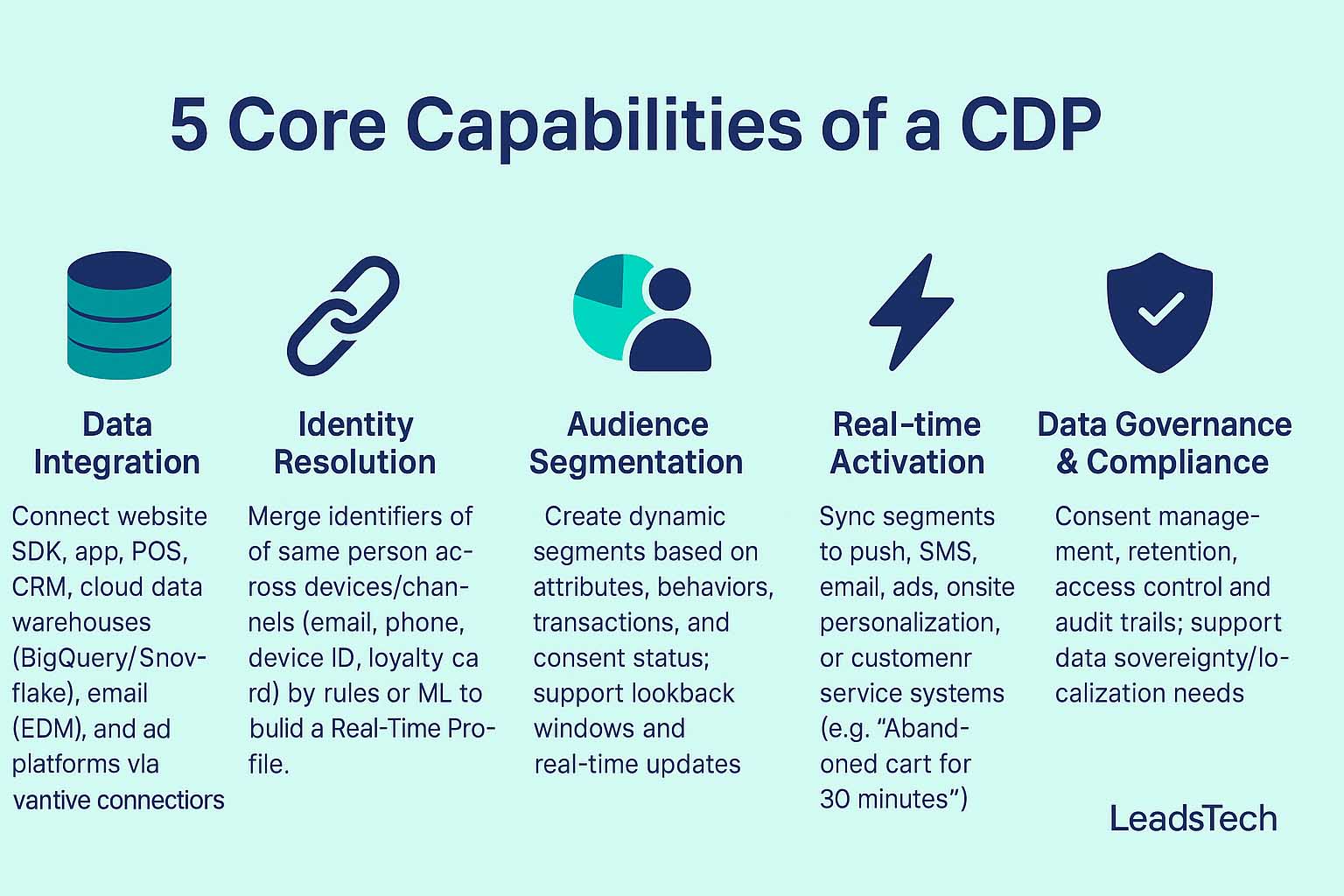
4. Taiwan Implementation Scenarios: E-commerce/Retail, Finance, and O2O

E-commerce / Retail
- Pain Points: Scattered member data, poor cart recovery, manual ad list syncing.
- Solution: Integrate web/app/POS with EDM to create dynamic “high-intent” segments (e.g., viewed in 7 days + cart not purchased), triggering push + EDM + remarketing ads.
- KPIs: Recovery rate, repurchase rate, Average Order Value (AOV).

Finance / Insurance
- Pain Points: Strict compliance, complex consent management, fragmented product data.
- Solution: Build a centralized consent hub; trigger personalized journeys based on key events (e.g., policy simulation, form submission); write interaction results back to profiles for optimization.
- KPIs: Account opening/approval conversion rate, cross-sell ratio, audit efficiency.
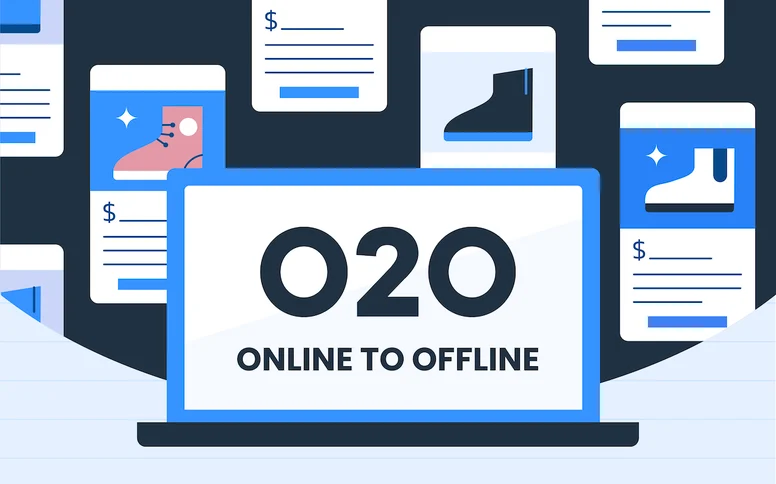
O2O / Chain Retail
- Pain Points: Disconnected online–offline data, lack of personalized promotions.
- Solution: Send POS and app transaction data to CDP, then trigger localized offers via push notifications based on geography and preferences; personalize in-store pages and app content.
- KPIs: Store visit rate, coupon redemption rate, membership upgrade rate.
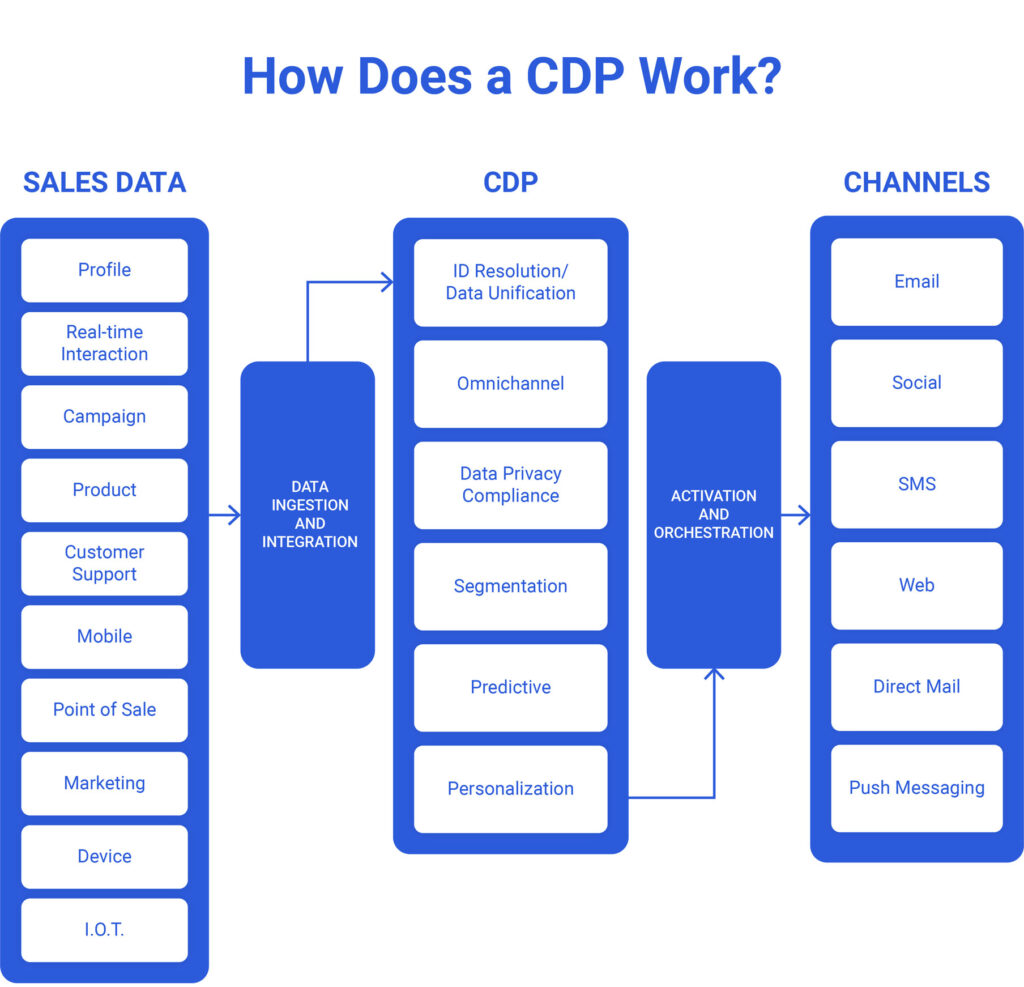
5. Key Selection Criteria & Implementation Roadmap
5.1 Selection Criteria (Top 5 RFP Points)
Connectors & Latency
Native integration with web/app/CRM/EDM/data warehouse; event latency and freshness SLA.
Identity Stitching & Governance
Rules/ML-based merging, conflict resolution, visual governance, and anonymization support.
Real-Time Activation
Event triggers, real-time audience computation, cross-channel sync (push/SMS/EDM/ads/on-site).

Compliance
Consent management, audit reports, data sovereignty/localization, access control.
Cost & ROI
Licensing model (events/profiles), manpower for setup/maintenance, TCO, and payback period.
5.2 Implementation Roadmap (3 / 6 / 12 / 24 Months)
M+3 | Single Customer View Ready
CDP fully deployed with unified customer profiles (SCV). Enables actionable insights and sales growth strategies.
KPI: Segment coverage ↑, cart recovery rate ↑
M+6 | Advanced Segmentation & Personalization at Scale
Launch high-level personalization and segmentation to reduce marketing costs and increase ROI.
KPI: CAC ↓, Repurchase rate & AOV ↑
M+12 | Data Democratization & Model Feedback
Empower all departments to access and use data autonomously, unlocking efficiency and innovation.
KPI: Self-service usage ↑, List activation turnaround ↓
M+24 | Data-First Culture Established
Embed a data-driven mindset across teams—enhancing agility, collaboration, and customer-centric operations.
KPI: Conversion rate & LTV ↑, Insight-to-action cycle time ↓
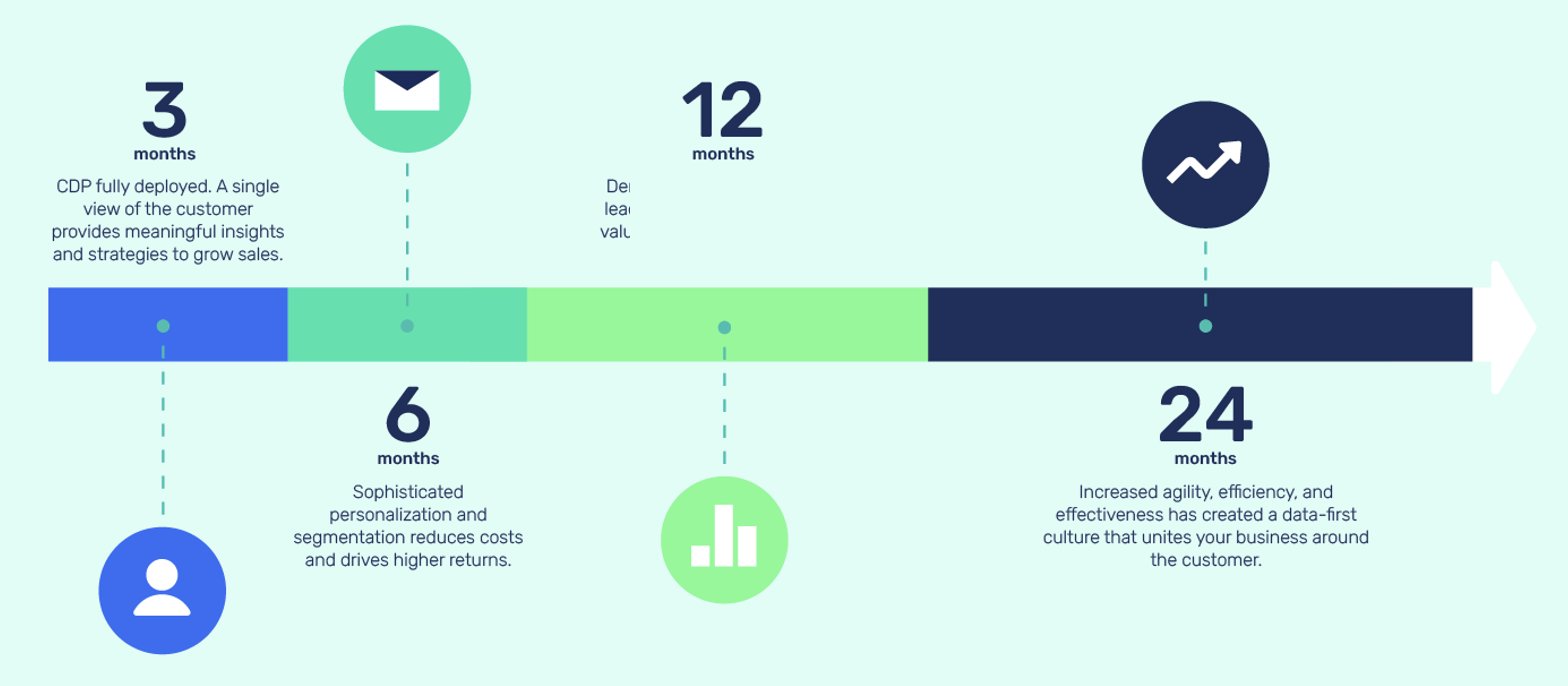
6. Conclusion & Call to Action
In the cookieless and privacy-first era, CDP becomes the core system for integrating, understanding, and activating first-party data.
Start small with 1–2 high-value use cases (e.g., cart abandonment recovery or member reactivation), use real-time triggers and governance as your foundation, and expand to more channels and teams with continuous optimization via dashboards and A/B testing.
Want to quickly assess your system readiness or CDP implementation roadmap? Talk to our consulting team for a tailored strategy.
Or, to compare leading CDP solutions and see which fits your business best, check out our next article:
“Top 5 CDP Platforms in Taiwan 2025: Comparison and Recommendations.”


